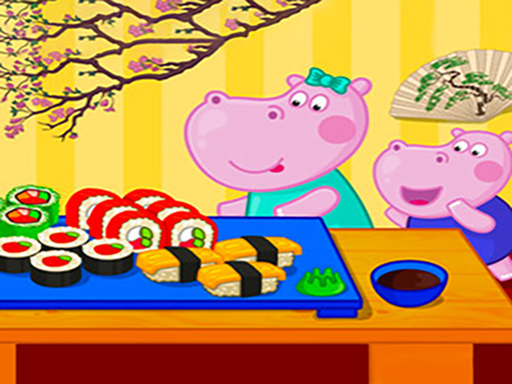
What Pumpkin In A Dark World Is & Why It Captivates
Let me carry you from our ordinary world into this game’s atmosphere.
The Premise & Mood
In Pumpkin In A Dark World, you control a small pumpkin whose mission is simple, yet terrifying: survive as long as possible in a rain-soaked maze of obstacles. Spikes jut from the ground, stones tumble, platforms shift, and shadows hide dangers. One misstep, and your pumpkin bursts into darkness. The game leans on its eerie aesthetic — constant rain, glistening surfaces, dim light — to keep you on edge.
Have you ever noticed how something simple (a rolling stone, a glint of metal) can make your heart jump in a dark game? That’s precisely the thrill here.
Gameplay Mechanics (Basics)
-
Controls: Tap or click to make your pumpkin jump or move (depending on version).
-
Obstacles: Spikes, falling stones, moving platforms—these are your adversaries.
-
Goal: Survive as long as possible; there’s no “finish line” per se, just distance, score, endurance.
-
Difficulty ramp: As you go further, obstacles come faster, patterns more complex, reaction time tighter.
The simplicity is deceptive. Though you control just “jump / move,” the timing, spacing, and pattern recognition become the true challenge.
In an early run, I had my kid beside me, whispering, “Mom, there’s a spike coming right!” She tapped to jump — phew, she cleared it — then next moment got surprised by a falling stone. She looked at me wide-eyed and said, “This is scary but fun!” That mix of tension and reward is the heartbeat of the game.
Now, having dipped into its mood and basics, let’s roll up our sleeves and go step by step through mastering a run.
Step-by-Step Guide to Survive & Score Higher
Since this game is unforgiving, a structured walkthrough helps. Let’s take a hypothetical run and break it into phases.
Phase 1: Start & Orientation
From the moment the level begins:
-
Pause mentally – even if briefly. Let your eyes adjust to the lighting and see the first spikes or stones.
-
Advance cautiously – move forward slowly, not in blind leaps.
-
Jump timing – tap just before your pumpkin hits the “danger zone” of an obstacle; jumping too early or too late is often fatal.
Phase 2: Mid-Run & Rhythm
When you’re deeper into the run:
-
Patterns emerge: spikes might alternate, stones could drop in sequences. Try to lock into rhythm.
-
Use micro-pauses: if safe, slow your forward motion to recalibrate when obstacles get dense.
-
Jump chains: sometimes you’ll need to string two jumps quickly—first to clear a stone, then immediately to clear a spike after landing.
At one moment, I saw a pattern: stone, then spike, stone, spike. I whispered, “Okay, I’ll jump-pause-jump.” And it worked. My child next to me gasped: “How did you know?” And I laughed: “Because I watched the pattern.” That’s the magic of this game — your brain starts reading danger before it hits.
Phase 3: Late Run & Crisis Mode
Near the end of your run — when speed is high and dangers merge:
-
Trust micro-reflexes: sometimes you must react without thinking.
-
Avoid high-risk zones: steer away from cascades of hazards if possible, even if they look like shortcuts.
-
Save your jumps: if the game allows a buffer (like double jump or mid-air correction), preserve them for rescue.
If you survive the hardest zone, it’s a glorious moment: your pumpkin glides further than ever, your heart thunders, you feel a little drumroll in your chest. That’s the reward.
This step-by-step structure gives you guardrails. But what about strategies that apply broadly? Let’s gather those next.
Core Strategies & Tips for All Levels
Once you grasp the phases, here are strategies to carry into every run. These tips help children, parents, and general players alike.
Top Strategies (Bullet List)
- Start slower than you feel you should — don’t rush forward too soon.
- Watch obstacle sequencing before committing to jumps.
- Use micro-pauses (tiny slowdowns) as a reset tool.
- Prefer safer routes over flashy shortcuts in tight zones.
- If the game gives a “buffer jump” or correction, save it for emergencies.
- After death, reflect: “Where did I misjudge?” or “What pattern surprised me?”
Strategy Table
| Scenario | Observation | Best Strategy |
|---|---|---|
| Sudden spike just after a stone | The spacing is compressed | Jump combo but delay the second jump slightly |
| Falling rock + ground spike | Two hazards in sequence | Stay back a bit, then jump later |
| Long run with repeating obstacles | You see similar clusters ahead | Mentally tag “danger zones” early |
| Tight horizontal passage | little room left or right | Center your path and avoid full speed |
| When speed is too high | Hard to adjust in time | Slow your forward momentum, if possible |
| After many deaths at same zone | Pattern repeated | Pause before that zone in next run and plan strategy |
What’s your favorite strategy when you see a tricky pattern emerge? I often whisper, “Wait… wait… now!” to myself.
Let’s also think about how a parent or coach might guide a child through these runs without taking over.
Coaching Kids & Parental Tips
Playing Pumpkin In A Dark World with a child is more rewarding when you guide gently rather than dominate. Here are approaches for supportive coaching.
Encouragement Over Criticism
When a child dies repeatedly, say things like:
- “You almost made it past the double spike — I saw your reaction!”
- “Nice timing on that jump — you’re getting sharper.”
- “Let’s pause, look together, and choose where to jump next time.”
Avoid blame or impatience. The aim is shared joy, not just perfection.
Guiding Questions & Shared Strategy
Rather than telling them exactly what to do, ask:
- “Where do you see safe space to land?”
- “Which obstacle looks hardest—do you wait or jump now?”
- “If you slowed just a bit, could you see the next spike?”
One time, my niece was stuck on a trio of spikes. I asked, “Do you think the second is closer to the first or the third?” She thought a moment, said, “Closer to first,” then delayed slightly and cleared them. Her grin was priceless.
Practice Zones & Segment Focus
If a run always dies at the same zone, treat that as a “mini-level.” Practice just that segment repeatedly. Reduce stress by isolating bad zones and letting them become familiar.
Celebrate Recovery & Persistence
When your child (or you) survive a zone you always died in, treat it as a small victory: high-five, short break, share excitement. That builds confidence more than perfection.
You don’t want the game to feel like punishment; you want it to feel like a shared adventure.
Now that we have strategies and coaching tips, let’s talk about harnessing the emotional side—frustration, excitement, and resilience.
Emotional Flow: Frustration, Joy & Mindset
In a game like this, your patience and mindset matter almost as much as your reflexes.
Embracing Failure as Learning
When you fail — and you will often — pause for a breath. Reflect: “Which obstacle hurt me? Which jump mis-timed?”
I remember after one brutal run, my heart pounding, I closed my eyes and thought, that last spike came too fast after the stone. The next run, I delayed the jump. I went further. That micro-adjustment was the turning point. See failure not as shame, but as data.
Building Momentum & Confidence
Each time you survive a new distance, your confidence builds. Each small victory says, “I can push forward.” That confidence helps you stay calm under stress.
If you play with a child, recount a recent success before restarting: “Last time, you made it past 50 units — that’s amazing. Let’s see if we can push a bit further!” That sets a positive tone.
Regulating Frustration
When runs repeatedly die at the same spot:
- Pause the game. Take a breath, stretch, look away.
- Return with fresh eyes—sometimes the best adjustment comes after a break.
- Remind yourself or the child: “I’ve done this before—but I’ll do better this time.”
Be kind to your brain. The game is tough; you don’t have to be flawless.
Joy in the Process
Celebrate micro-moments: a clean jump, a zone cleared, a rhythm matched. Those are the moments you’ll remember more than the “furthest run ever.” Share them: laugh, mimic dramatic slow motion, exclaim, “That was close!”
When you feel the tension fade into focus and the pumpkin just feels right under your control, that’s your sweet zone.
Before we wrap, let’s outline the skills this game builds — because games that reward your brain and fingers are the best kind.
Skills & Benefits Behind the Shadows
While Pumpkin In A Dark World is primarily reflex-based, it nurtures several useful skills — especially for kids and learners.
Cognitive & Perceptual Skills
- Pattern recognition: spotting recurring obstacle sequences helps you anticipate danger.
- Timing and rhythm: the better you sync your taps, the further you go.
- Spatial awareness: judging distance between pumpkin and obstacle, or jump window.
- Quick decision making: split-second judgments—jump now or delay.
Emotional Resilience & Growth
- Grit and perseverance: continuing after failure, adjusting, retrying.
- Patience and thoughtful pacing: resisting the urge to rush and die.
- Self-reflection: analyzing your runs, learning what to do differently next time.
Focus & Concentration
As speed ramps up, distractions drop away — you must focus, block out noise, stay attuned to visual cues. That’s mental discipline.
Transfer to Daily Life
Those same skills—timing, delay, reflection—help in school, sports, or tasks requiring concentration. Games like this are micro-gyms for the mind.
Let me know if you’d like me to build a printable “Obstacle Pattern Workbook” or visual chart to help kids internalize typical sequences. I’d love to.
Emotional Flow: Frustration, Joy & Mindset
In a game like this, your patience and mindset matter almost as much as your reflexes.
Embracing Failure as Learning
When you fail — and you will often — pause for a breath. Reflect: “Which obstacle hurt me? Which jump mis-timed?”
I remember after one brutal run, my heart pounding, I closed my eyes and thought, that last spike came too fast after the stone. The next run, I delayed the jump. I went further. That micro-adjustment was the turning point. See failure not as shame, but as data.
Building Momentum & Confidence
Each time you survive a new distance, your confidence builds. Each small victory says, “I can push forward.” That confidence helps you stay calm under stress.
If you play with a child, recount a recent success before restarting: “Last time, you made it past 50 units — that’s amazing. Let’s see if we can push a bit further!” That sets a positive tone.
Regulating Frustration
When runs repeatedly die at the same spot:
- Pause the game. Take a breath, stretch, look away.
- Return with fresh eyes—sometimes the best adjustment comes after a break.
- Remind yourself or the child: “I’ve done this before—but I’ll do better this time.”
Be kind to your brain. The game is tough; you don’t have to be flawless.
Joy in the Process
Celebrate micro-moments: a clean jump, a zone cleared, a rhythm matched. Those are the moments you’ll remember more than the “furthest run ever.” Share them: laugh, mimic dramatic slow motion, exclaim, “That was close!”
When you feel the tension fade into focus and the pumpkin just feels right under your control, that’s your sweet zone.
Before we wrap, let’s outline the skills this game builds — because games that reward your brain and fingers are the best kind.
Skills & Benefits Behind the Shadows
While Pumpkin In A Dark World is primarily reflex-based, it nurtures several useful skills — especially for kids and learners.
Cognitive & Perceptual Skills
- Pattern recognition: spotting recurring obstacle sequences helps you anticipate danger.
- Timing and rhythm: the better you sync your taps, the further you go.
- Spatial awareness: judging distance between pumpkin and obstacle, or jump window.
- Quick decision making: split-second judgments—jump now or delay.
Emotional Resilience & Growth
- Grit and perseverance: continuing after failure, adjusting, retrying.
- Patience and thoughtful pacing: resisting the urge to rush and die.
- Self-reflection: analyzing your runs, learning what to do differently next time.
Focus & Concentration
As speed ramps up, distractions drop away — you must focus, block out noise, stay attuned to visual cues. That’s mental discipline.
Transfer to Daily Life
Those same skills—timing, delay, reflection—help in school, sports, or tasks requiring concentration. Games like this are micro-gyms for the mind.
Let me know if you’d like me to build a printable “Obstacle Pattern Workbook” or visual chart to help kids internalize typical sequences. I’d love to.
Quick Reference: Tips & Summary
Here’s your go-to cheat list before you dive in again:
| Tip | Why It Helps | Practice Pointer |
|---|---|---|
| Pause, scan, then act | Avoid surprise hazards | Train yourself to start slower |
| Watch obstacle sequencing | You anticipate next move | Mentally label hazard groups |
| Use micro-pauses | Reset when overwhelmed | Slight slowdown often saves you |
| Prefer safe paths | Avoid clusters of hazards | Don’t always chase the shortest route |
| Conserve jump buffer (if any) | For rescue moments | Save for when you misjudge |
| Analyze failed runs | Learn from error | Replay or mentally retrace |
| Celebrate small wins | Sustain motivation | Any zone survived is progress |
Key Strategies (bullets):
- Start cautiously, not fast
- Let pattern recognition guide you
- Avoid flashy shortcuts in tight spots
- Stay calm even when runs get intense
- Learn from each death
- Reinforce confidence with celebrations
Keep this reference nearby as you or a child play; glance at it before each run.
Platforms, Access & Version Notes
Before you leap back in, here’s where and how to play Pumpkin In A Dark World, and what to watch out for.
Where to Play
This game appears in hypercasual portals like Plavonar, described on sites under the title Jack in a Dark World or Pumpkin in a Dark World. One such description is found on Plavonar’s detail pages. Plavonar
Often, it runs in browser form — click or tap to play — meaning you don’t need a download. Just open in a capable browser (Chrome, Firefox) and go. Always ensure you use trusted sites to avoid malicious overlays.
Version Differences & Cautions
- Some sites may call it “Jack in a Dark World” or use variants in the name. Plavonar
- Beware ad overlays, popups, or performance slowdowns — those can ruin timing.
- Some versions might offer upgrades or power-ups; others may remain pure reflex only.
- Because this is a hypercasual title, it may not have long-term developer support or frequent updates.
If you ever want a direct, safe link to a playable version, I can find and verify one for you. Just ask.
Final Thoughts & Invitation
You’ve now got the map, the tactics, the emotional compass, and the mindset. Pumpkin In A Dark World isn’t just a spooky reflex game — it’s a little mirror of how we face challenges: we jump, adjust, fail, learn, and push again.
So, here’s a question for you: What’s your proudest “I made it further than ever” run? That moment when your heart clenched, and then opened wide when your pumpkin slid past danger. That’s more than a score. It’s your progress story.
If you like, I can help you design a visual obstacle cheat sheet, or craft a “level patterns journal” you or a child can scribble in after each run. Want me to make that? 😊
For Your Social
#PumpkinInDarkWorld #ReflexGame #HypercasualGaming #ParentChildPlay #GamingStrategies #DarkAtmosphereGame





